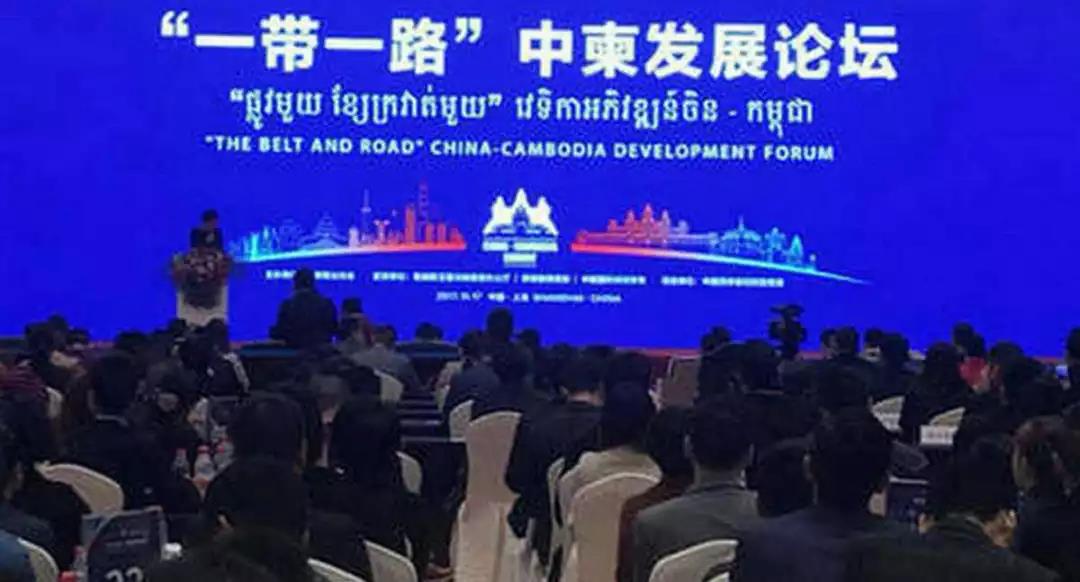This service account insists on originality. The author is Zhang Xiaoming, partner of Zhuozhi (Cambodia) Accounting Firm, three years of multinational enterprise management experience, six years of listing audit experience, five years of entrepreneurial experience, Chinese certified public accountant (CPA), international certified public accountant (ACCA) ). WeChat: 13928404895, 085502018
As China's economic strength continues to increase, more and more Chinese companies have gone abroad to increase their foreign investment. The overseas investment activities of Chinese companies have spread throughout Europe, America, Asia, Africa, Latin America and the Middle East. As one of the Southeast Asian countries, Cambodia has attracted more and more Chinese companies to invest due to political stability, economic openness and improved investment environment. China once became Cambodia's largest source of foreign capital. In addition to President Xi Jinping’s visit to Cambodia in October 2016, the two countries signed a series of bilateral cooperation documents. The comprehensive strategic partnership between China and Cambodia has been further enhanced. The enthusiasm of Chinese companies to invest in Cambodia will also continue to rise. Investment environment, tax system and investment considerations, etc.
This guide mainly introduces Cambodia's investment environment, foreign investment laws and regulations, taxation system, and main tax types. It aims to help Chinese resident companies to understand the basic local conditions and taxation system when investing in Cambodia, so as to improve Carry out operations well and avoid tax risks.
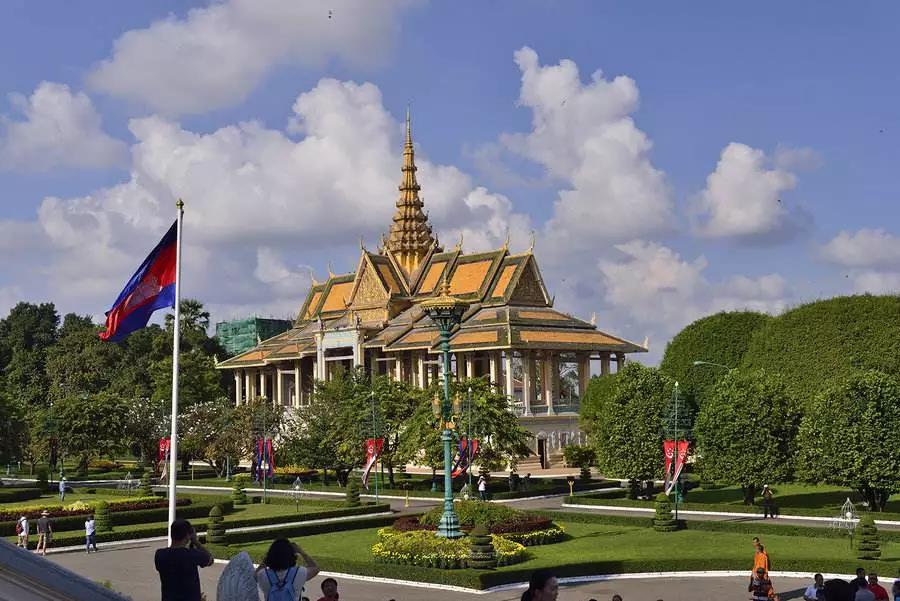
Introduction to Cambodia
Natural environment
Cambodia is located in the south of Indochina Peninsula in Asia. It borders Vietnam to the east and southeast, Laos to the north, Thailand to the west and northwest, and the Gulf of Siam to the southwest. The Mekong River traverses the entire territory from north to south. The land area is 181,035 square kilometers, and the coastline is about 460 kilometers long. Cambodia is rich in teak, ironwood, red sandalwood, black sandalwood, white mao and other high-grade woods, and there are many kinds of bamboos. Mineral deposits mainly include oil, natural gas, phosphate, gems, gold, iron, bauxite, etc. Rich in water resources, Tonle Sap Lake is the largest natural freshwater lake in Southeast Asia and is known as the "fish lake".
Cambodia has a tropical monsoon climate. The year is divided into two seasons: the rainy season is from May to October, and the dry season is from November to April of the following year. The annual average temperature is 24℃, and April is the hottest, with the highest temperature reaching 40℃. The average annual rainfall is 2000 mm, 90% of which are concentrated in May-October. The population of Cambodia is approximately 14.4 million. The geographical distribution of the population is very uneven. The residents are mainly concentrated in the central plains.

Political Environment
● Political system
Since 1993, Cambodia has restored its constitutional monarchy, implemented a multi-party liberal democracy, and separated the legislative, judicial and administrative powers. The king is the life-long head of state, the supreme commander of the armed forces, and a symbol of national unity and perpetuity. He has the right to declare an amnesty and has the right to dissolve the parliament after the Prime Minister proposes and obtains the consent of the chairman of the parliament. A bicameral system of Congress and Senate is implemented. The Congress is the country's highest authority and legislative body, with about 120 seats and a term of office of 5 years. The constitutional powers conferred on Congress mainly include: legislative power, fiscal control power, supervision power, and parliamentary autonomy. The Senate is the national legislature with 61 seats and a term of 6 years. There are 9 special committees under it. The main functions and powers of the Senate conferred by the Constitution include legislative power and parliamentary autonomy.
● Main parties
Cambodia is a free, democratic and multi-party country with active party politics. Currently, there are 59 political parties, of which 42 are legally registered. The People's Party, the Fongcinbek Party and the National Salvation Party are the main political parties. In the 2013 general election, the People's Party won more than half of the parliamentary seats. People's Party Chairman Xie Xin, Honorary Chairman Han Sanglin, and Vice Chairman Hun Sen were elected as the Chairman of the Senate, the Chairman of the National Assembly and the Prime Minister of the Government, respectively.
The People's Party fully controls the legislative, judicial, and administrative powers. Cambodia’s judiciary is independent, and the court system has lower courts, appeal courts and the highest court. The Supreme Council of Judges is the administrative department of the judicial system, responsible for overseeing the work of the courts, and has the right to select, appoint and remove judges.

Social and cultural environment
● Nationality
Cambodia is a multi-ethnic country with more than 20 ethnic groups. The Khmer ethnic group is the main ethnic group, accounting for 80% of the total population, and believes in Theravada Buddhism. Ethnic minorities include Cham, Punong, Lao, Thai, Chinese, Jing, Burmese, Malay, Sting, etc. There are about 700,000 Chinese and overseas Chinese in Cambodia, accounting for about 5% of the total number of people in the country. They are mainly distributed in the provinces of Battambang, Gan La, Gongbu, and Takeo. The capital, Phnom Penh, has the largest number of Chinese and overseas Chinese, with about 300,000. The ethnic Chinese and overseas Chinese in Cambodia are mainly from Guangdong, Hainan, Fujian and other provinces. Among them, Chaozhou natives of Guangdong are the most, accounting for about 80% of the total number of Chinese and overseas Chinese, followed by Guangzhao and Hakka natives.
Cambodian Chinese are mainly engaged in import and export trade, daily necessities, tourism and catering, food processing, clothing and hardware machinery, real estate, construction, wood processing, agriculture, fishery, etc.
● Language
Khmer is the lingua franca, and is the same official language as English and French. In addition, English and French are also the working languages of government departments. Chinese and Vietnamese are the most commonly used languages among ordinary citizens.
● Religion
Religion occupies a very important position in the politics, society and daily life of the Cambodian people. The Constitution of the Kingdom stipulates that: "Citizens of both sexes enjoy full freedom of belief, and the state protects freedom of belief and religion." At the same time, Buddhism is clearly defined as the state religion. People who believe in Theravada Buddhism account for more than 85% of the national population. There are also Christianity (approximately 36,000 followers) and Islam (approximately 320,000 followers).
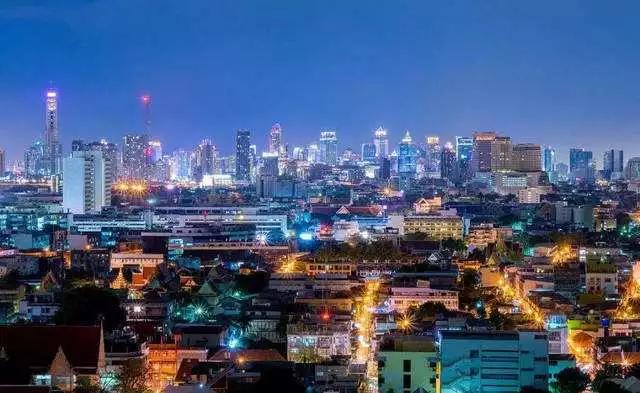
The status quo of Cambodia's economic development and the economic and trade development between China and Cambodia
The status quo of Cambodia's economic development
Cambodia implements an open and free market economic policy, and economic activities are highly liberalized. According to the American Heritage Foundation's “2014 Economic Freedom Index” ranking, Cambodia ranks 108th. Among the ASEAN member states, Cambodia ranks seventh in the region after Singapore, Malaysia, Brunei, the Philippines, Thailand and Indonesia. Ranked 23rd among 42 countries and regions in the Asia-Pacific region. 28 countries or regions, including the United States, the European Union, and Japan, grant Cambodia's Generalized System of Preferences (GSP). For the import of textile and apparel products from Cambodia, the United States grants looser quotas and reduces or exempts import tariffs, while the European Union does not impose restrictions, and Canada offers preferential treatments such as exemption of import tariffs.
Since 2010, Cambodia has maintained an economic growth rate of more than 6%, of which, after 2013, the economic growth rate has reached or exceeded 7%. The Cambodian government stated in its newly formulated "2015-2025 Industrial Development Plan" that by 2018, it will strive to ensure an annual economic growth rate of more than 7%. The Ministry of Finance and Economics of Cambodia predicts that the economic growth rate in 2016 will be about 7.1%, of which the industrial sector will maintain double-digit growth; the inflation rate will be controlled at a low level of 1.9%. The International Monetary Fund and the Asian Development Bank predict that the Cambodian economy will continue to maintain strong growth in 2016, driven by the clothing and footwear, construction and service industries, GDP will maintain a rapid growth of 7% to 7.2%, and the inflation rate will be controlled In the lower range of 2.5% to 2.8%. Comprehensive analysis shows that despite the influence of various unfavorable factors, as long as the Cambodian political situation is stable, the current economic policy is maintained, and the favorable factors are fully utilized, Cambodia's future development trend is generally positive.
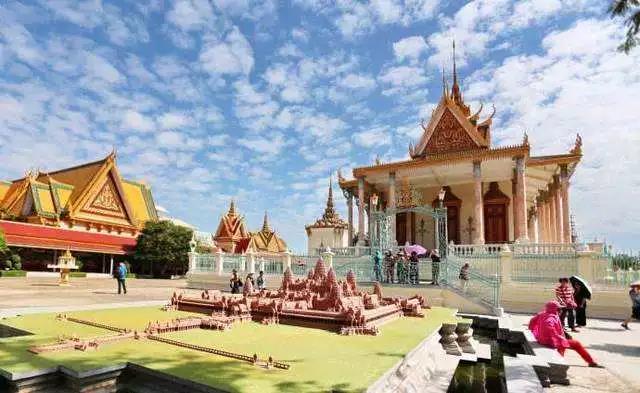
Key industry
Cambodia’s economic industries can be roughly divided into three categories: agriculture, industry (mainly textile and garment industry and construction), and service industry (mainly tourism, accounting for about 25%).
Agriculture is the first pillar of Cambodia's national economy and has a pivotal position. Cambodia has abundant agricultural resources, superior natural conditions, sufficient labor force, large market potential, and good agricultural economic benefits. In addition, the successive governments of Cambodia have attached great importance to agricultural development, listed agriculture as a priority area, and strived to improve agricultural production and its investment environment, fully tapped the potential, exerted advantages, and opened up the market. Cambodia has broad prospects for agricultural development. The clothing industry and the construction industry are the two pillars of Cambodia's industry. The textile and garment industry is not only the backbone of Cambodia's industry, but also the main force in Cambodia to provide employment, alleviate poverty, and maintain social stability.
Cambodia is a country rich in tourism resources. Phnom Penh, the capital, has such historical sites as Ta Tsai Mountain and the Royal Palace; the Angkor Wat in the Angkor dynasty ruins in Siem Reap in the north is one of the seven wonders of the world; Sihanoukville in the southwest is a famous seaside resort. In recent years, the coastal area has gradually become another important tourist destination after the Angkor Scenic Area, playing an important role in the development of Cambodia's tourism industry. The development of tourism will continue to drive the development of related industries such as finance, transportation, hotels, catering and service industries, and become an important pillar and source of income for the Cambodian economy in the future.
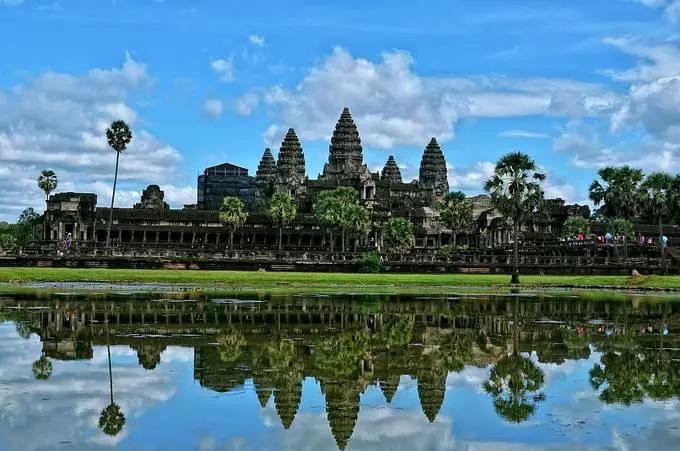
Cambodia's financial and tax status
● Current financial situation
According to the 2016 National Budget, the Cambodian Ministry of Finance and Economics plans to increase the 2016 budget to 4.35 billion U.S. dollars to ensure Cambodia’s 7% economic growth rate. The 2016 fiscal budget has increased by 11.1% compared with 2015. Fiscal expenditures are mainly allocated from taxation. Administrative expenditures are estimated to be US$439.3 million, an increase of 4.6% year-on-year; defense and security expenditures are US$669.7 million, a year-on-year increase of 9.8%; social welfare expenditures are US$1.15 billion, a year-on-year increase of 10.7%; economic expenditures are 18.9 One hundred million U.S. dollars. Capital expenditures in the above four areas will increase by 5%, 2.7%, 4.7%, and 4.7% respectively. Capital expenditures will be paid by government investment and donated funds.
● Tax status
In the first eight months of 2016, the taxation department collected USD 1 billion in taxes, a year-on-year increase of 20%. Taxes mainly come from profit tax, payroll tax, value-added tax, turnover tax, vehicle tax, patent tax and property tax. In August alone, taxes in one month reached 121 million U.S. dollars. This does not include customs duties levied by the customs department. In the first half of 2016, customs tax revenue reached US$ 883 million, a year-on-year increase of 19.4%.
Cambodia's financial environment
As the political and economic situation has basically stabilized, the Cambodian government has taken some active measures to improve and strengthen its fiscal and financial management, and has achieved certain results.
● National currency
The local currency is the riel. In 1993, the Cambodian government passed and implemented the "Foreign Exchange Law", which stipulates that the exchange rate is regulated by the market. In recent years, the exchange rate has basically stabilized at the level of 4000 riel to 1 U.S. dollar.
U.S. dollars are allowed to circulate in the market. In the past ten years, the U.S. dollar has become the main medium of exchange in Cambodian society, and its circulation accounts for more than 85% of the total currency circulation in the market. Renminbi and riel are not directly convertible, and settlement with riel must be bridged with U.S. dollars.
● Foreign exchange management
According to Cambodia's "Foreign Exchange Law", residents are allowed to freely hold foreign exchange. Foreign exchange business conducted through authorized banks is not subject to control, but if the single transfer amount is more than US$10,000 (inclusive), the authorized bank shall report to the National Bank. As long as the enterprises registered in the competent commercial authorities of Cambodia can open foreign exchange accounts.
● Banking institutions
The Cambodian banking system is composed of national banks and commercial banks. The main functions of the National Bank are to establish a legal framework for the financial system, maintain a stable price system, provide a basis for formulating financial policies, increase national capital, undertake inter-governmental financial settlement and manage national currencies, manage foreign exchange reserves, and supervise and regulate business Banks, specialized financial institutions, etc. operate in accordance with the law. The loose foreign exchange policy implemented by the Cambodian government has enabled foreign commercial banks to develop rapidly. Both Bank of China and Industrial and Commercial Bank of China have established branches in Cambodia.
● Financing conditions
The business scope of Cambodian commercial banks is relatively narrow. Although they can provide overseas capital transfer, letter of credit issuance and foreign exchange services, it is still difficult to provide real estate mortgages, loans and other services, and the loan period is short and the interest rate is high. At present, RMB cannot circulate freely in Cambodia, and Chinese-funded enterprises cannot use RMB to carry out cross-border trade and investment cooperation in Cambodia.
China-Cambodia Economic and Trade
● Overview of China-Cambodia Economic and Trade
Since the establishment of diplomatic relations between China and Cambodia in July 1958, bilateral economic and trade relations have continued to develop. Especially after the establishment of the Royal Government of Cambodia in 1993, the economic and trade cooperation between the two countries has been fully restored and developed.
In July 1996, the two governments signed the "Trade Agreement" and "Investment Protection Agreement." During Vice Premier Wu Yi’s visit to Cambodia and Prime Minister Hun Sen’s visit to China in 2004, the two sides signed 25 economic and trade cooperation agreements; during Premier Wen Jiabao’s visit to Cambodia in April 2006, the two sides signed 11 cooperation agreements; during Vice President Xi Jinping’s visit to Cambodia in December 2009, The two sides signed 14 economic and trade cooperation agreements. On January 1, 2010, the China-ASEAN Free Trade Area was completed in an all-round way, which further opened up broader and smoother channels and provided more opportunities for China-Cambodia economic and trade cooperation. In 2010, during Chairman Wu Bangguo's visit to Cambodia, the two sides signed 16 agreements covering infrastructure construction, water resources development and utilization, communication technology, energy development and other fields. There is great potential for the two countries to deepen bilateral economic and trade cooperation. In March 2012, during President Hu Jintao's visit to Cambodia, the two sides issued a joint statement in which they agreed to double the bilateral trade volume to US$5 billion by 2017. In December 2014, State Councilor Yang Jiechi visited Cambodia and participated in the second meeting of the China-Cambodia Intergovernmental Coordinating Committee. During the meeting, the two sides signed 6 economic and trade cooperation documents involving interconnection planning, infrastructure construction, medical care and many other fields, in order to promote the two countries Further strengthening economic and trade cooperation has played a positive role.
In October 2016, President Xi Jinping visited Cambodia and the two sides signed 31 cooperation agreements. This is an important milestone for the promotion of China-Cambodia comprehensive strategic partnership.
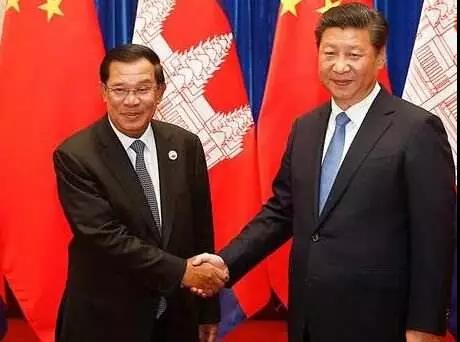
● The latest bilateral trade data
In 2015, the total bilateral trade between China and Cambodia was US$4.43 billion, an increase of 18%, of which our exports and imports increased by 15% and 38% respectively. From January to June 2016, the bilateral trade volume was US$2.34 billion, an increase of 10.2%, of which our exports were US$1.96 billion, an increase of 7.4%, and imports were US$380 million, an increase of 27.4%.
According to Chinese statistics, as of June 2016, China's non-financial direct investment stock in Cambodia was US$3.8 billion. Among them, in 2015, the investment in Cambodia was 390 million U.S. dollars, a decrease of 26%, and from January to June 2016, the new investment in Cambodia was 180 million U.S. dollars, an increase of 9.7%. As of the end of June 2016, we have signed a total of 12.82 billion U.S. dollars in contracted projects in Cambodia, and completed a turnover of 8.35 billion U.S. dollars. In 2015, the value of our newly signed project contracts in Cambodia was US$1.42 billion, an increase of 0.5%; the completed turnover was US$1.21 billion, an increase of 25.8%. From January to June 2016, the value of our newly signed contract projects in Cambodia was US$710 million, an increase of 221%; the completed turnover was US$690 million, an increase of 30.1%.
